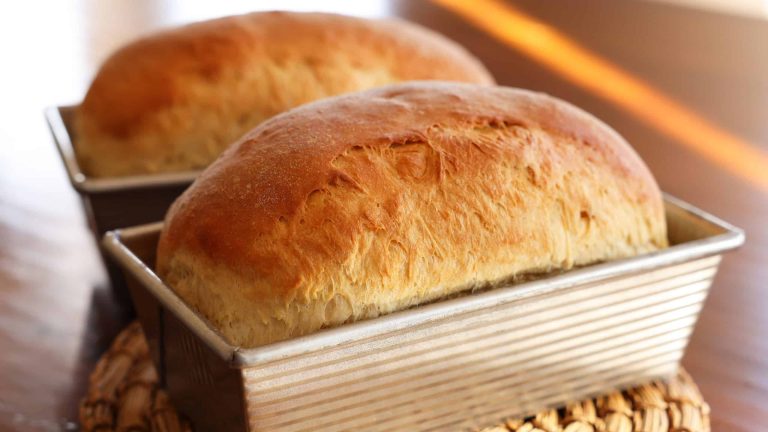
Choosing between bleached and unbleached flour can seem daunting, but understanding their differences can help you make the best choice for your culinary needs. Let’s dive into the nuances between these two types of flour.
Table of Contents
Comparing Bleached and Unbleached Flour
1. Production Methods
- Chemically treated with agents like chlorine gas or benzoyl peroxide.
- Accelerates the aging process, making the flour whiter and finer.
- Alters the protein structure, often resulting in softer textures in baked goods.
- The bleaching process also reduces the natural yellow pigment in the flour, which can impact the final appearance of your baked goods.
- This chemical treatment can sometimes leave trace amounts of chemicals in the flour, which is a concern for some consumers.
- Naturally aged, allowing it to whiten over time.
- No chemical additives are used in the aging process.
- Retains a denser texture and more natural color compared to bleached flour.
- The natural aging process can take several weeks, which is why unbleached flour is often more expensive than bleached flour.
- The lack of chemical treatment means unbleached flour retains more of its natural wheat flavor and aroma, which can enhance the taste of your baked goods.
2. Characteristics
- Bright white appearance.
- Softer texture, ideal for delicate baked goods.
- Often used in commercial baking for consistent results.
- Typically produces lighter, fluffier baked goods due to the altered protein structure.
- Has a slightly different taste compared to unbleached flour, which some people can detect in their baked products.
- Slightly off-white or yellowish tint.
- Denser texture, providing more structure.
- Preferred for artisan breads and heartier baked goods.
- Produces baked goods with a more robust flavor and chewier texture.
- The natural aging process allows the gluten in the flour to develop more fully, which can improve the texture and rise of baked goods.
3. Nutritional Content




4. Health Considerations
- Generally considered safe for consumption.
- Concerns about chemical residues have led some to prefer unbleached varieties.
- Regulatory agencies like the FDA have deemed the bleaching agents used in flour as safe for consumption in the quantities used.
- Some people choose to avoid bleached flour due to concerns about potential health effects of long-term exposure to chemical residues.
Unbleached Flour
- Free from chemical additives, making it a choice for those avoiding processed foods.
- Naturally processed, appealing to consumers seeking more natural ingredients.
- Often perceived as a healthier and safer option due to the absence of chemical treatments.
- The natural aging process can also contribute to the overall safety and purity of the flour.
5. Culinary Applications


Conclusion


Choosing between bleached and unbleached flour depends on your baking needs and personal preferences. Bleached flour offers a finer texture and is excellent for delicate baked goods, while unbleached flour provides a heartier, more natural option ideal for robust recipes. Both types have their unique features, making them suitable for different culinary creations. By understanding their differences, you can select the right flour to achieve perfect results in your baking endeavors.
If you’re looking for consistent results and lighter textures, bleached flour might be the way to go. On the other hand, if you prefer a more natural product with robust flavor and texture, unbleached flour is an excellent choice. Remember, the best flour for you ultimately depends on what you’re baking and your personal health considerations.
For further information, consider exploring these resources:
- Healthline on Bleached vs. Unbleached Flour
- The Kitchn’s Guide to Flour Types
- Bob’s Red Mill on Flour Differences
Choosing the right flour can make a significant difference in your baking, so experiment and discover which type best suits your needs!
Can you be more specific about the content of your article? After reading it, I still have some doubts. Hope you can help me.
I’d be happy to help clarify any doubts you have. Could you let me know which article you’re referring to and what specific points you found unclear? This way, I can provide more detailed explanations or additional information to address your questions.
Your point of view caught my eye and was very interesting. Thanks. I have a question for you.
I’d be glad to help clarify any doubts! Could you let me know which specific points or sections of the article you’re unsure about? That way, I can provide more detailed explanations or further information.